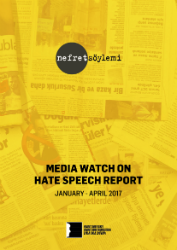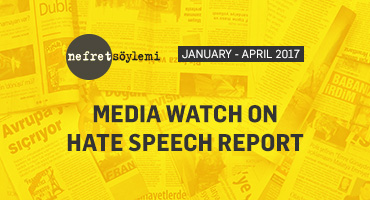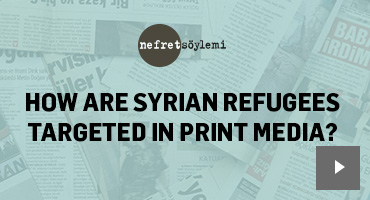Hrant Dink Foundation has been conducting the project titled “Media Watch on Hate Speech” since 2009. This study, which launched with the purpose of drawing attention to the discriminatory language against ethnic and religious identities, sexist and homophobic discourse and news containing hate speech, raising public awareness against such publications, and contributing to reduce the use of hate speech in media, aims to generate knowledge on the concept of “hate speech”, create a platform for discussing the methods for combating discriminatory and racist discourse, and promote the use of a more respectful and informed language in terms of human rights and minorities.
As part of this study, national and local press is scanned and news articles and columns containing discriminatory, marginalizing and targeting discourse are determined. These items are archived in the Library of Hrant Dink Foundation on a daily basis and the selected items are published via social media networks with brief analyses. Every four months, a report containing quantitative and qualitative analyses on the hate speech items that are found in the related period is issued.
Starting from 2013, discriminatory discourse thematic subjects are included in this systematic media watch on hate speech. A detailed discourse analysis is carried out by focusing on a selected subject within the related four-month period and determining a particular research method for each subject. These analyses aims to reveal the discriminatory discourse, which is featured more implicitly compared to hate speech.
Method of Media Watch Project
Within the scope of the media monitoring work based on hate speech, all national newspapers and about 500 local newspapers are scanned based on predetermined keywords (e.g. traitor, proselyte, refugee, Christian, Jew, separatist, etc.) by the media monitoring center.
While the main focus is hate speech on the basis of national, ethnic and religious identities; sexist and homophobic discourses are also examined as part of the monitoring work. Discourse analysis method, commonly used in media studies, and other techniques related to it are used in this project. In accordance with the analyzed items, it is revealed where (in which newspapers), how and by which sources hate speech is generated most frequently and whom it targets.
Our definition of hate speech is based on the Recommendation on hate speech adopted by the Committee of the Ministers of the Council of Europe in 1997. Hate speech, as defined by the Council of Europe, “covers all forms of expression which spread, incite, promote or justify racial hatred, xenophobia, anti-Semitism or other forms of hatred based on intolerance, including: intolerance expressed by aggressive nationalism and ethnocentrism, discrimination and hostility against minorities, migrants and people of immigrant origin.”
News articles determined as featuring hate speech are categorized based on the characteristics of the adopted discourse. The categories of hateful discourse, which are determined on the basis of international scientific studies and in consideration of the country-specific lingual and cultural differences, are as follows:
- Exaggeration / Attribution / Distortion: Any discourse that features negative generalization, distortion, exaggeration or negative attribution targeting a community as a whole, based on a specific individual or event (e.g. “Enough with Syrians”).
- Swearing / Insult / Defamation: Any discourse that contains swearing, insult or defamation about a community (e.g. “treacherous”, “traitor”
- Enmity / War Discourse: Any discourse that includes hostile, war-mongering expressions about a community (e.g. Violence of the Greeks).
- Using an inherent identity as a basis for hate or humiliation / Symbolization: Any discourse that uses various aspects of one’s inherent identity as a basis of hate, humiliation or symbolization (e.g. “Will a Jews represent us in the Eurovision?”).



